I have never wanted to visit Joshua Tree National Park, California even though I live about 8.5 hours away from it in San Francisco. The desert scenery with a bunch of cactus doesn’t really appeal to me. I also do NOT like hiking in the heat. Camping in the heat? Forget it! So how and why did I end up visiting Joshua Tree National Park? Well…I wanted to be in the wilderness, somewhere out in the open. I wanted to escape the 4 walls of my apartment. When a friend of mine told me Joshua Tree camping was open, I knew I had to go. Needless to say, I fell in love with this very unique national park AND the cactus AND camping 🙂 So read on for my guide to Joshua Tree camping!
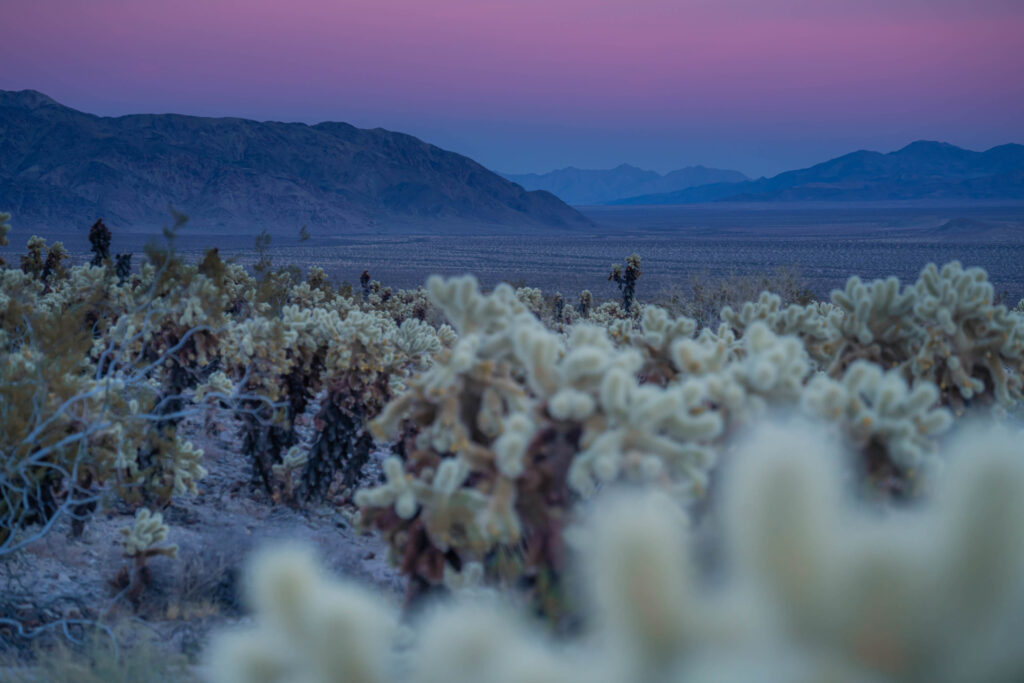
When to Camp at Joshua Tree National Park?
The best time to visit Joshua Tree for camping is March to May and October to November. Beyond May, the desert gets really hot and uncomfortable to do anything other than take all day siestas! Joshua Tree camping during the winter and spring is pleasant and fun. The entry fee is $30 per vehicle unless you have a National Parks Pass.

Do I Need a Permit or Reservations to Camp in Joshua Tree National Park?
You DO need reservations for Joshua Tree camping in some of the sites. There a few sites that are walk-in only. But by the time you get to the park, the chances are those sites may be taken. The good news is that you do NOT need to book a permit or a reservation to camp in the wilderness at Joshua Tree National Park! That was music to my ears, because I couldn’t get any car camping reservations (they were all sold out). I also wanted to camp in the wilderness to social distance and avoid using public bathrooms.
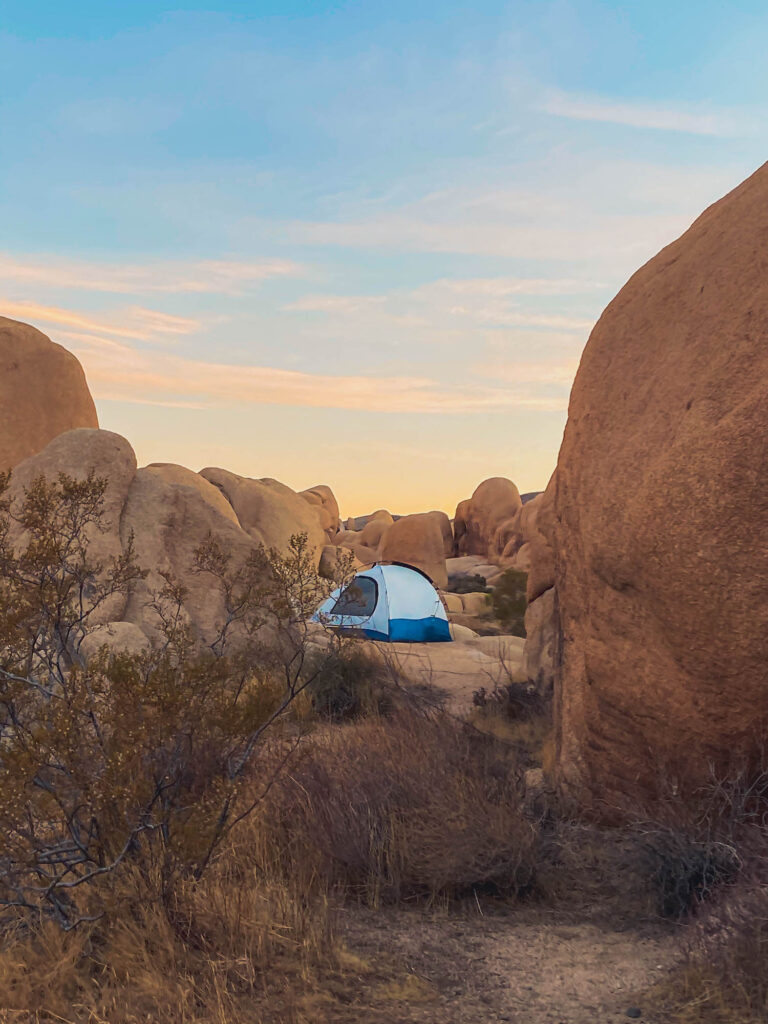
How to Choose Your Backcountry Camping Spot
Before heading into the backcountry for Joshua Tree camping, you need to register at one of these backcountry boards:
- Black Rock Canyon
- Cottonwood Spring
- Covington
- Geology Tour
- Indian Cove
- Juniper Flats
- Keys West
- North Entrance
- Pine City
- Pleasant Valley
- Porcupine Wash
- Turkey Flats
- Twin Tanks
I chose the Twin Tanks board because it’s right across from the Arch Rock area which I wanted to explore. Twin Tanks is also on the way to the Cholla Cactus Garden which I also wanted to see.
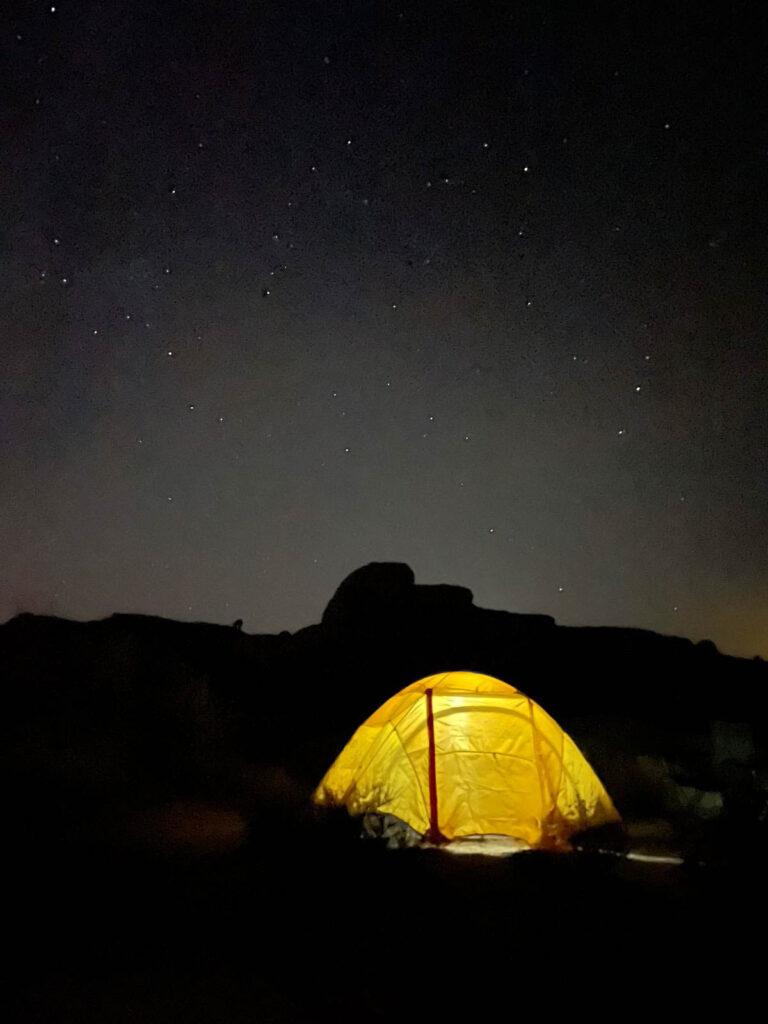
Backcountry Board Logistics
Each backcountry board is located in a parking lot. Once you park, walk over to the little kiosk and pick up a permit (located inside the black box). Fill out the permit and tear the half that belongs in your car and put the other half back in the box. This is so the rangers can track your whereabouts as well as refrain from towing your car. If you don’t fill a permit, your car will be towed from the parking lot. This is an essential step for Joshua Tree camping in the wilderness. Once you leave your parking lot you need to hike at least one mile away from the parking lot and at least 100ft away from a trail or water source before setting up your tent.
What You Need to Know Before You Decide to Camp in the Wilderness
The safest time for Joshua Tree camping is during the winter and fall. AVOID the summer due to the heat. Potable water is NOT available so you must have enough water for your stay. Take at least one gallon per person per day. You will need a map and a compass when camping in the wild here. I say this because once the sun sets, the light disappears very fast and it’s easy to become very disoriented trying to find your campsite in the dark. The trees and the rocks all look the same in the dark. If you’re staying at Twin Tanks by the rocks, you will have to navigate your way through uneven ground that resembles a hidden valley of sorts. Campfires in backcountry are prohibited. You will need a stove if you want to cook food or boil water.
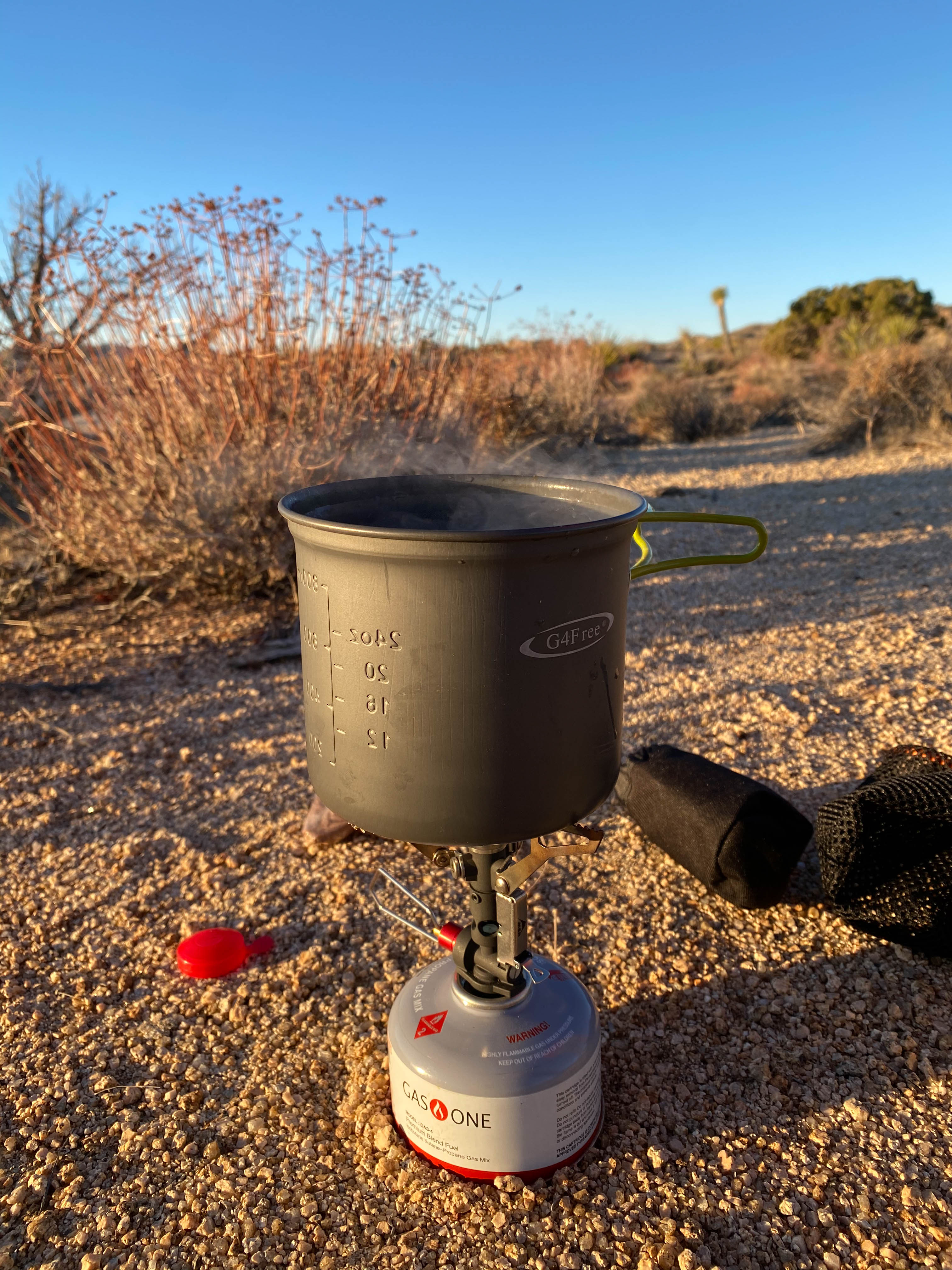
What to Eat During Wilderness Camping?
My go to backpacking foods are the Mountain House Adventure meals! I especially love the Granola with Blueberries/Milk powder for breakfasts. All you have to do is add 1/2 cup of regular room temperature water and dig in. I promise you, you won’t regret this breakfast! I also love their Pad Thai. They have some Indian curry options like Channa Masala which is also not bad! For the hot food, just follow directions on the backside of the packet. Usually you will need to heat about 2.5 cups of water. Let it sit in the packet for about 10 minutes and stir and enjoy 🙂 These might very well be the best meals you eat when you’re in Joshua Tree camping!
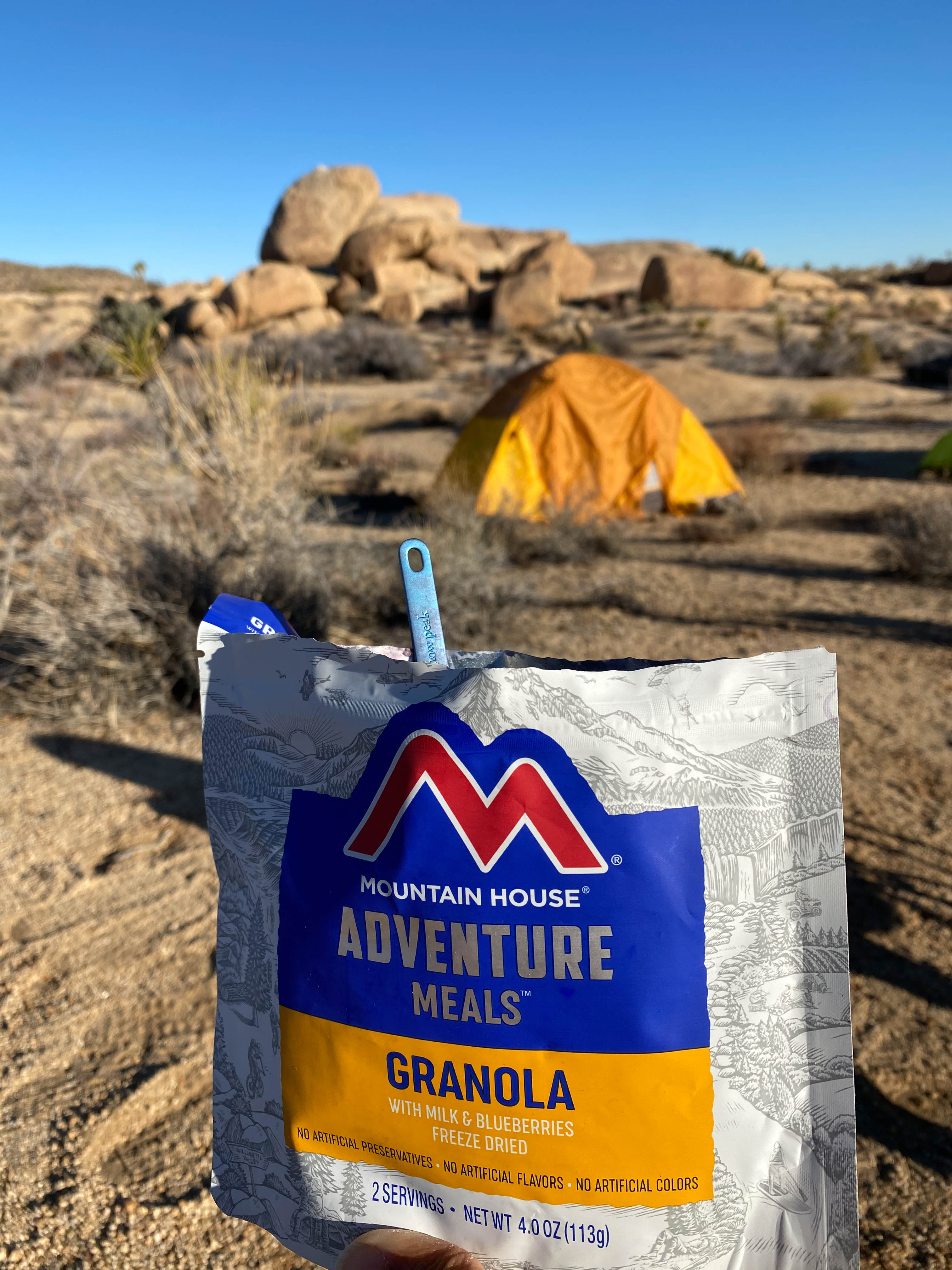
What to Pack During Wilderness Camping?
If you’re going to be in Joshua Tree camping during the winter months here is what you will need to pack:
- 3 season tent
- Beanie to wear at night; sun hat for the day
- Thermals
- Base Layer + Fleece top
- Down jacket + wind & rain resistant jacket
- Gloves + hand warmers
- Down sleeping bag
- Inflatable sleeping pad
- Stove and pot for cooking/boiling hot water
- Camelbak to carry water in during the day/hikes
- Day backpack for snacks, camera gear, layers, etc
- Sunscreen is a must here
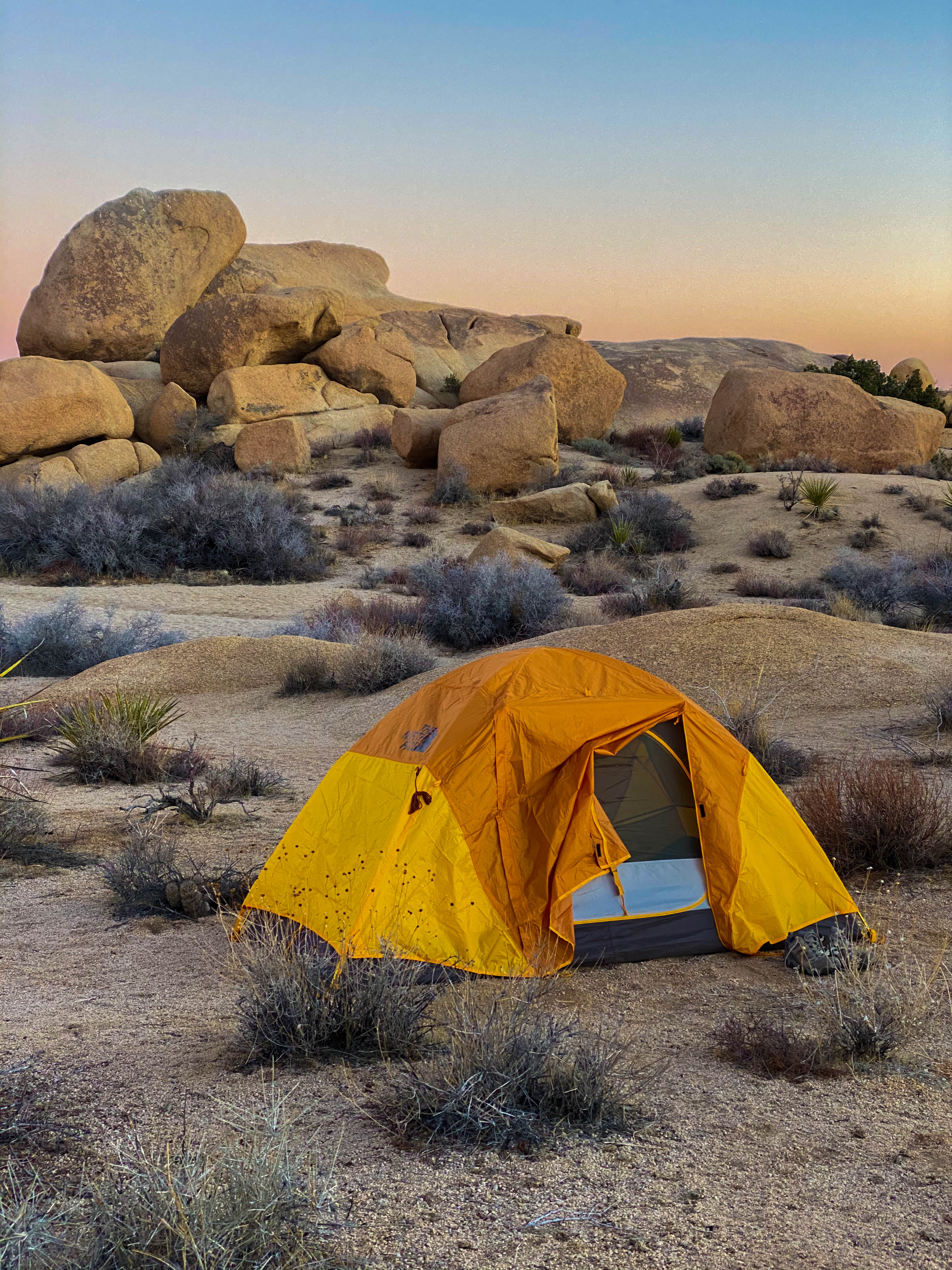
What to See in Joshua Tree National Park?
There is actually quite a bit to see and do if you’re in Joshua Tree camping.
Hiking Arch Rock: Start your morning with a hike across the street from your camping spot in Twin Tanks over to Arch Rock. It’s a little tricky to find this spot. If you hike through the White Tank Campground, walk until you find campsite #9. The Arch Rock Nature Trail begins here and the Arch Rock itself is towards the right. If you follow the little placards placed on the trail and move in the general direction towards the right, you will come to Arch Rock. Sunrise is best as the light turns shades of pink and blue. Pro Tip: You’ll need to wait at least an hour after that for the sun flare to hit the Arch Rock. Meantime, explore the place and have fun climbing the boulders!
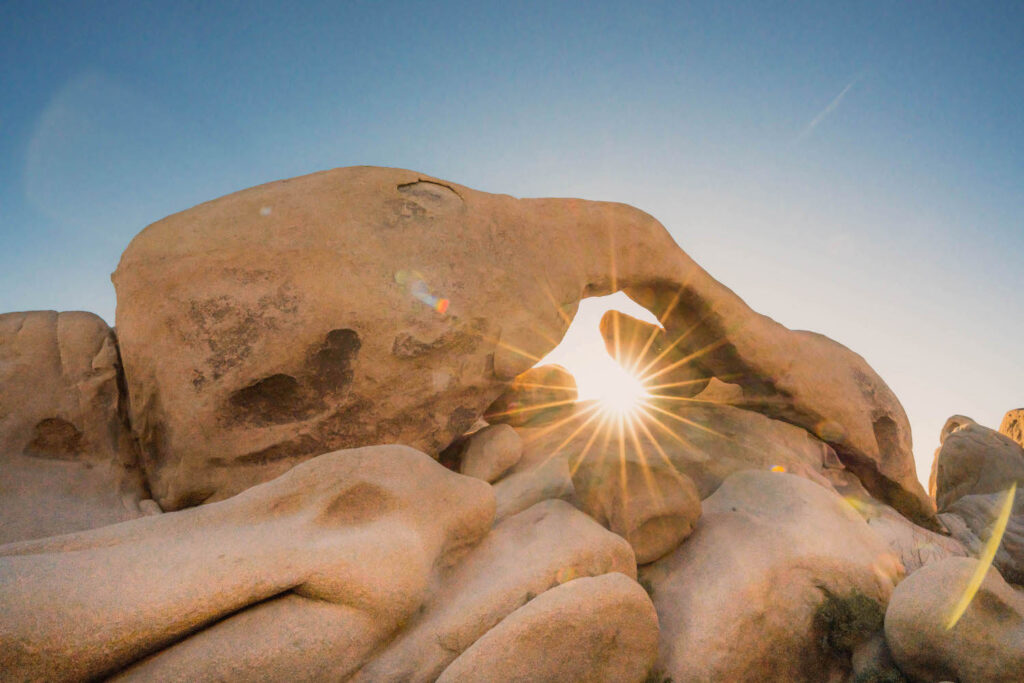
Skull Rock and Jumbo Rocks: Next, drive over to Skull Rock. Parking is on the road or in the little parking area in front of the Skull Rock. You cannot miss Skull Rock as it’s in the shape of a skull. Walk around this area and indulge in some boulder climbing. Then take the trail to the right and hike along to Jumbo Rocks. Pro Tip: Jumbo Rocks are the rocks at the base of the Jumbo Rocks campground and is a fun place to explore when in Joshua Tree camping.
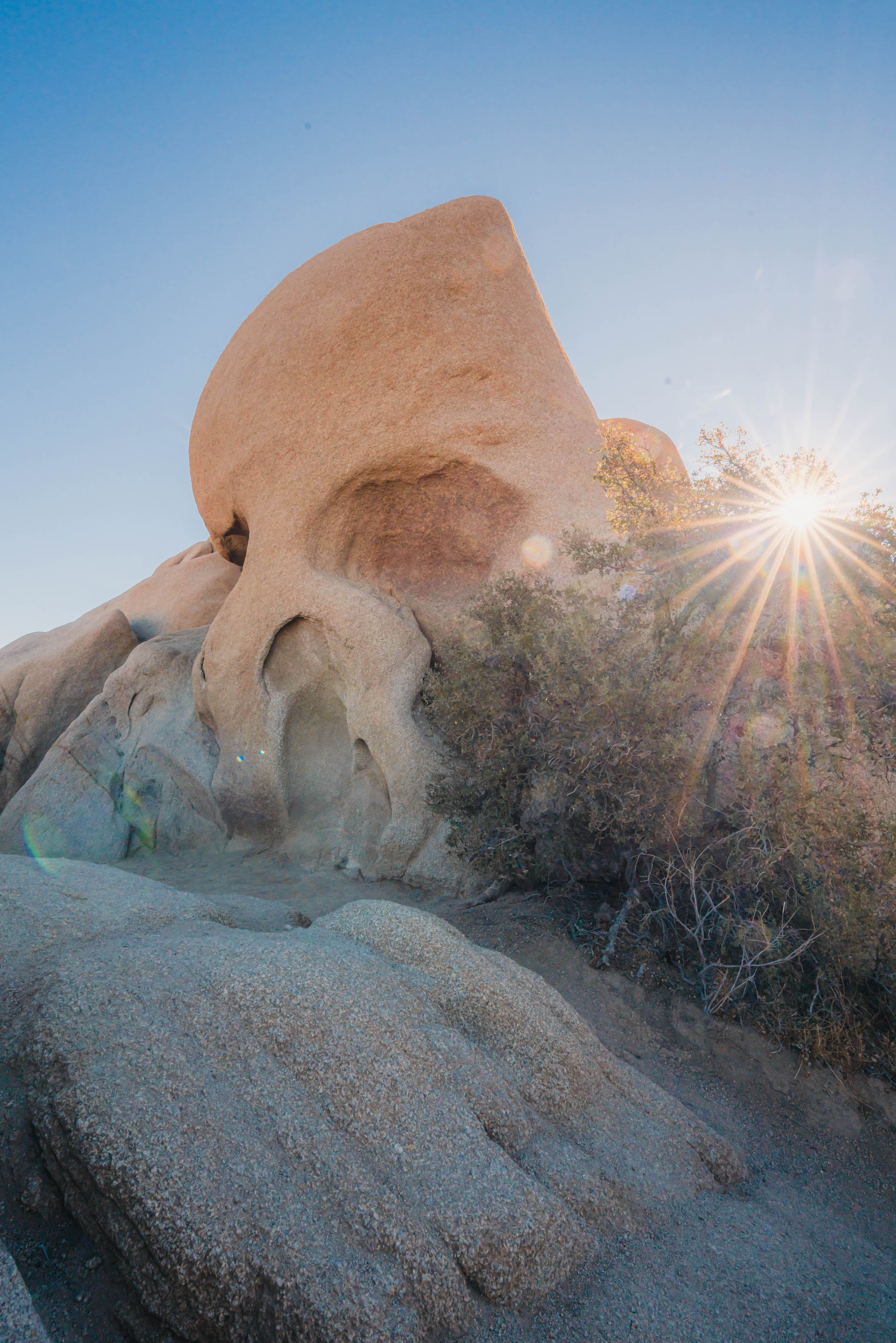
Hall of Horrors: Driving further you will reach the Hall of Horrors. If you’re a fan of narrow passages and climbing boulders, this area is for you! It’s located just off the main Park Boulevard near the Ryan Mountain Trailhead. Pro Tip: Wear proper hiking boots with ankle support and watch out for the jumping Cholla as they will stick to your clothes and skin!
Joshua Tree Boy Scout Trail: This is a moderate 7.8 mile trail that has some crazy rock formations, sandy stretches in the canyon portion, and then views of the Big Bear mountains among a walk through a bunch of Joshua Trees! Pro Tip: This is another great backcountry camping option if you want to experience wilderness camping in Joshua Tree.
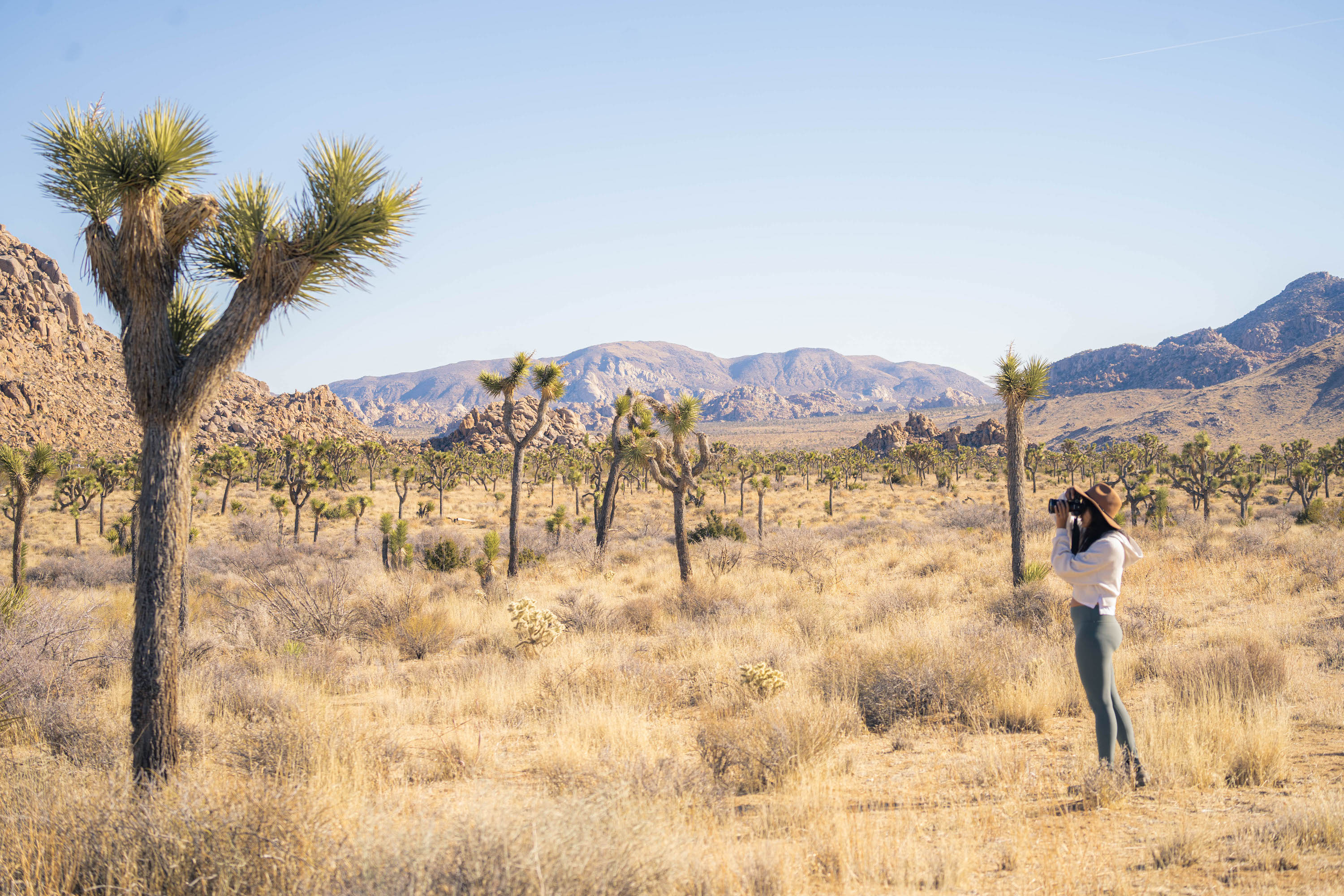
Cholla Cactus Garden: Whether you are car camping or wilderness camping in Joshua Tree, I highly recommend you end the day with a drive toward the Cholla Cactus Gardens. Known as the “teddy bear” Cholla, this is one teddy bear you cannot hug! As you are walking be aware that even slightly brushing against a cholla will cause the spines to dive into your shoes, clothes, and/or skin. Speaking from personal experience, pulling out the spines is quite unpleasant. Pro Tip: The colors are sunset are stunning!
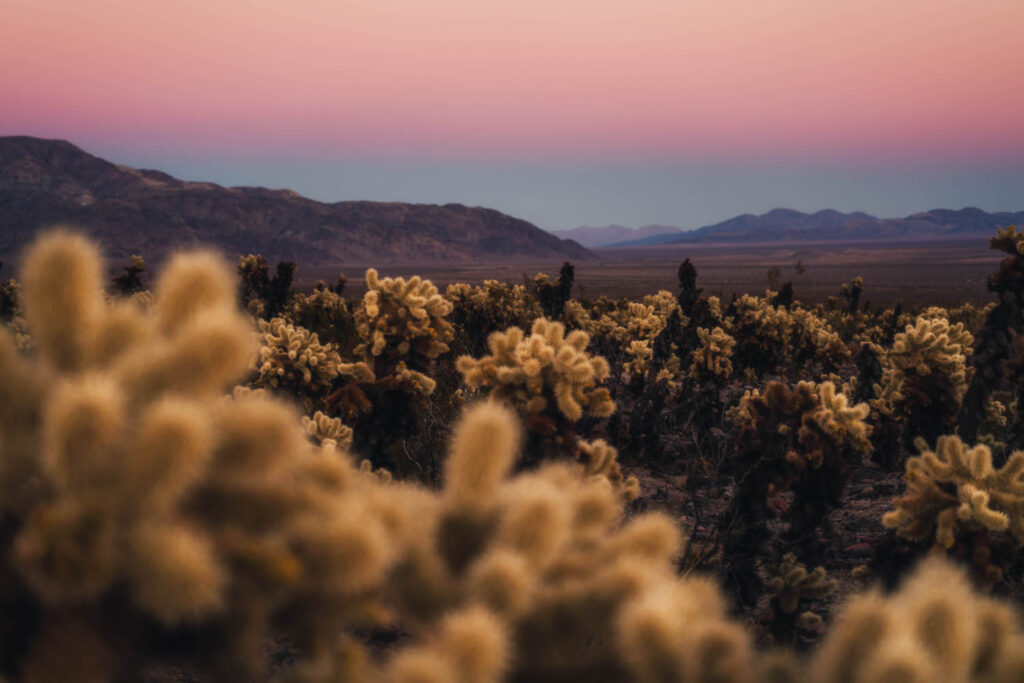
Ryan Mountain Hike: It’s an out and back 2.9mi steep hike at the center of the Joshua Tree National Park. Elevation gain is 1070 feet but the 360 degree views of the entire park are well worth the climb. It can get windy at the summit so bring a jacket even if it’s hot during the day. Pro Tip: Keep an eye out for the big horn sheep!
Hidden Valley Nature Trail: This is an easy and short one mile trail where you enter through an opening into a large bowl surrounded by rock walls. It’s thought that due to the geography, Hidden Valley was once used by cattle rustlers, who would herd the cattle into this area to conceal them. Pro Tip: Hike up to some of the boulders and enjoy a higher viewing point of the entire valley. This is one of the prettier trails while you’re in Joshua Tree camping in the park.

Keys View: Keys View is a lookout point at an elevation of more than 5,000 feet, with sweeping views extending out over the Coachella Valley. In the distance, you can see the San Andreas fault line, Palm Springs, the Salton Sea, and on a clear day, beyond to Mexico. Pro tip: If the air is clear, the view is spectacular and this is a great way to get oriented with the surrounding geography. Come at least an hour before sunset so you can get parking in the lot.

Barker Dam Nature Trail: If you’re in Joshua Tree camping, I would only recommend this spot if there is water. You can ask the kiosk attendant at the park entrance if there is water before planning to head here during your stay. The trail is a 1.3-mile loop. You will walk by huge Joshua trees, rocks, and an area of water that often attracts birds. At the far end of the loop are the remnants of a water tank left by cattle ranchers who once lived in the area. Pro tip: The best scenery is past this point and you can see some of the largest trees on the loop beyond the dam.
Conclusion
In conclusion, I never expected to like Joshua Tree National Park, let alone fall in love with it. The experience of wilderness camping, dancing under the billion stars, hiking, climbing boulders, and seeing the Cholla Cactus at sunset all took my breath away. It reminded me once again how diverse California really is and that there is so much still begging to be explored. All you and I have to do is keep an open mind. 🙂 Remember, as always, follow the LNT principles. It is up to us to keep California beautiful for future generations to come!
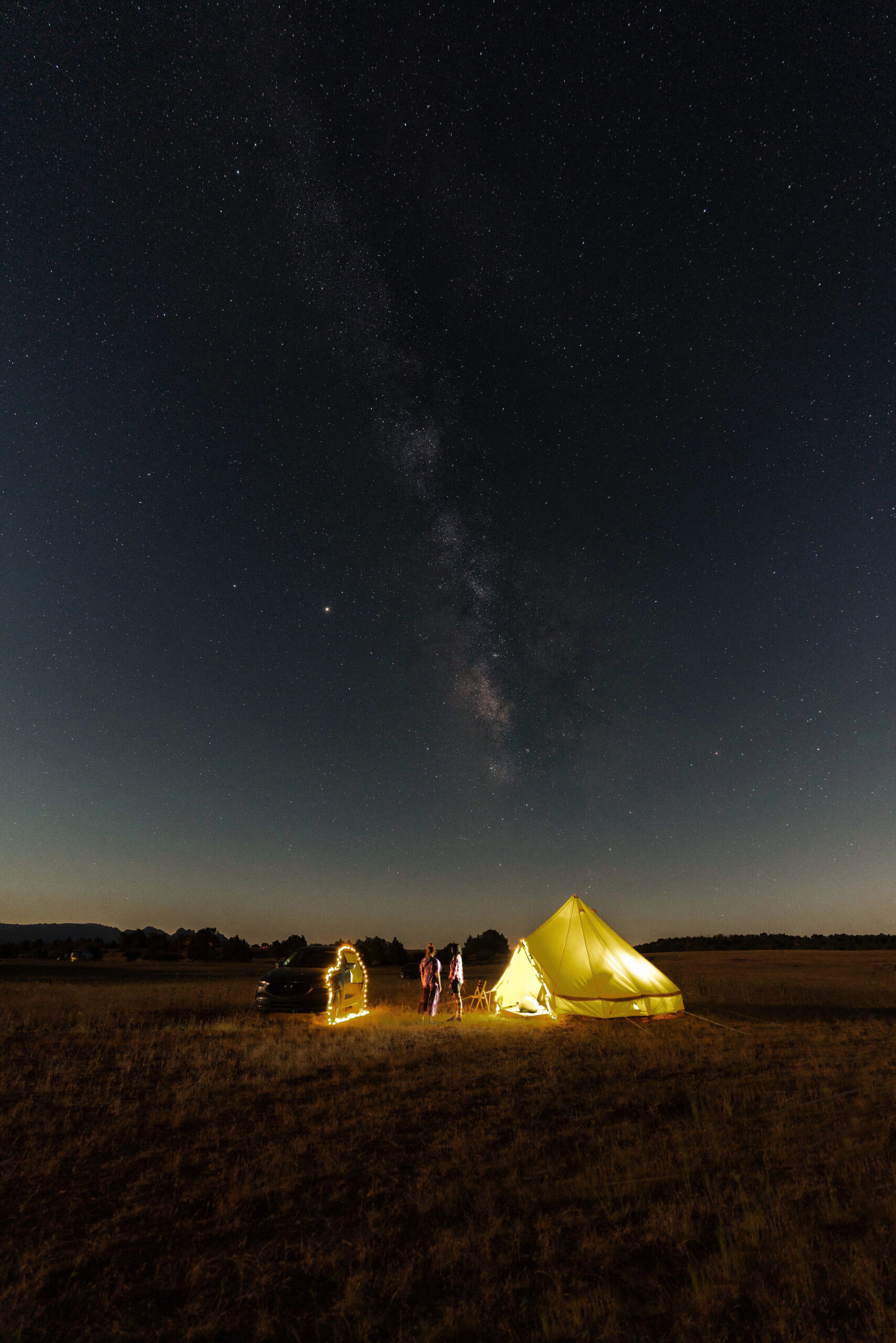
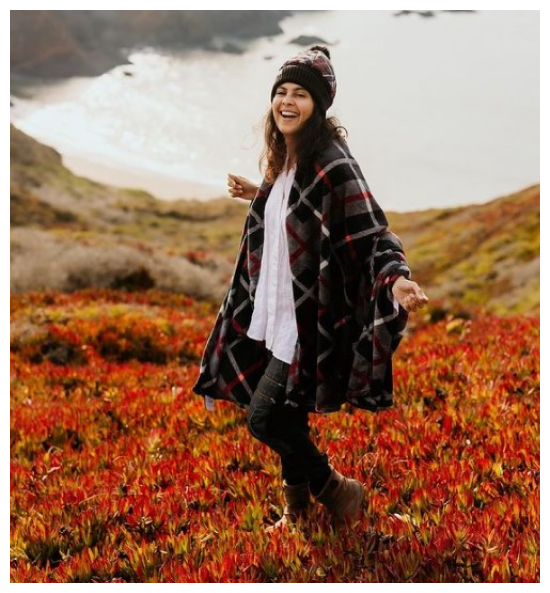
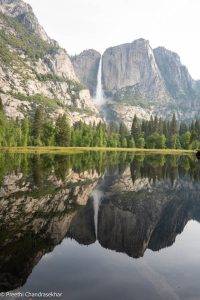
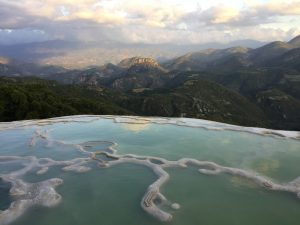
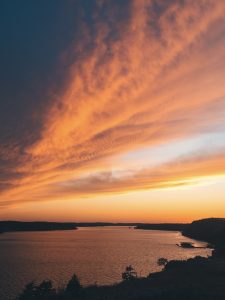
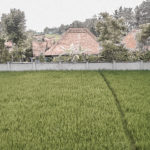
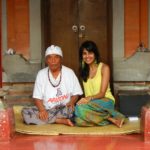
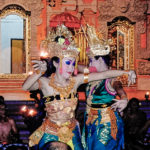
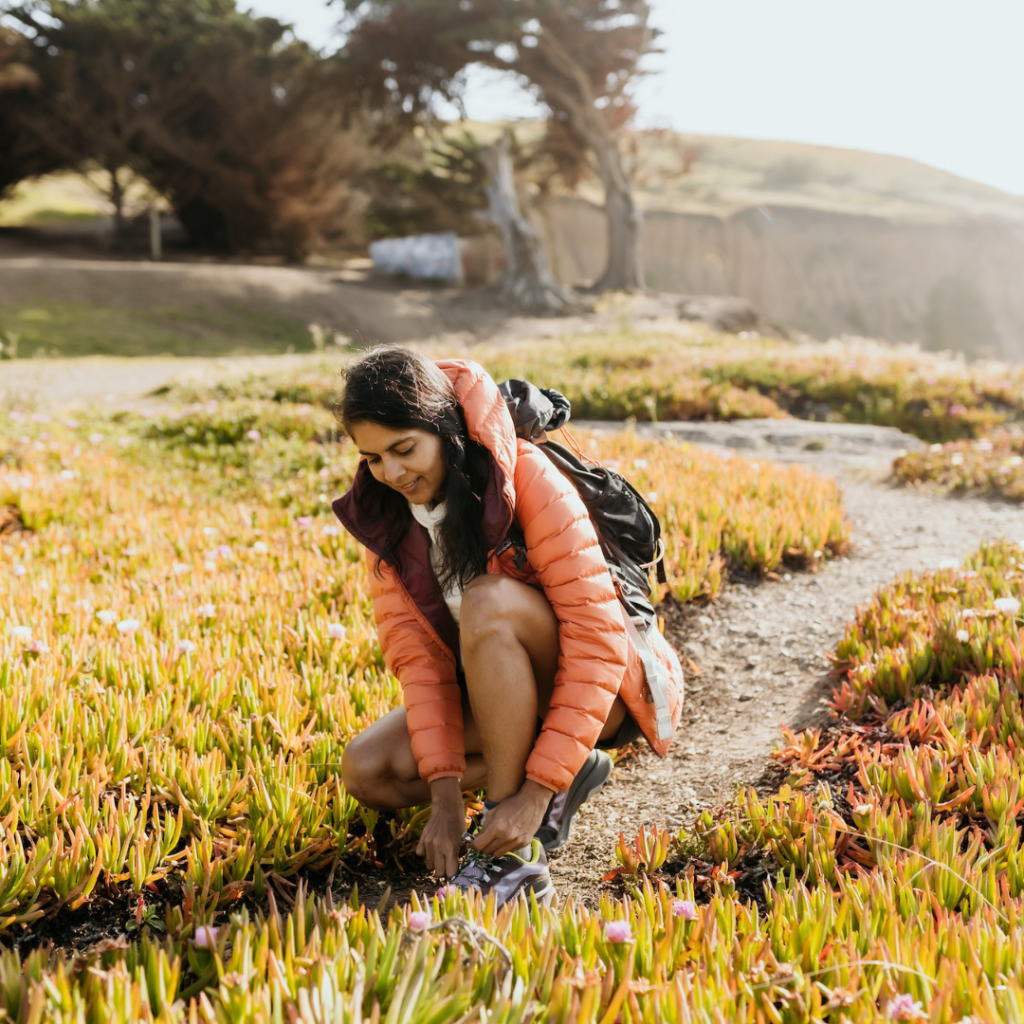
4 Responses